Unacceptable Behaviours at the Dog Park and Their Impact on Dog Interactions
Visiting a dog park can be a delightful experience for both you and your furry friend, but not all behaviours at these parks are acceptable. Understanding what actions can disrupt the harmony of a dog park is essential for ensuring a positive environment for everyone involved. Unacceptable behaviours can have serious implications on dog interactions and the overall atmosphere of the park.
First, it is essential to recognize aggressive behaviour, which can take several forms:
- Barking excessively: While some barking is normal, continual loud barking can disturb play and signal discomfort.
- Snapping or growling: Any display of teeth or aggressive sounds can indicate that a dog feels threatened, and it can escalate tensions among other dogs.
- Chasing other dogs: While some playful chasing is fine, if one dog continuously pursues another with a hostile intent, it can create fear and anxiety.
Next, there’s the concern of uncontrolled sociability. Dogs should be allowed to interact, but uncontrolled sociability can lead to discomfort:
- Jumping on people: A friendly dog may jump up to greet others, but this can be overwhelming or bothersome to some visitors.
- Persistent sniffing: While dogs naturally sniff to learn about their surroundings, over-stepping personal boundaries can lead to tension.
Another important issue is the responsibility of pet owners. Neglecting proper dog park etiquette can lead to unsafe situations:
- Failing to clean up after your dog: Leaving messes can lead to a negative experience for others and may even pose health risks.
- Not having your dog on a leash when required: Always follow park rules; some areas may require dogs to be leashed for safety.
- Ignoring your dog: It’s crucial to monitor your dog during play. Ignoring poor behaviour can allow it to escalate uncontrollably.
Additionally, certain interactions should be avoided completely, as they can trigger unwanted behaviour:
- Introducing unfamiliar dogs: Not all dogs will react positively when meeting a new dog. Some may become aggressive or fearful.
- Bringing toys from home: Toys can become a point of contention, leading to disputes among dogs. It’s best to keep playtime focused on socializing.
These behaviours can significantly impact the interactions among dogs. For instance, a dog that barks excessively may cause other dogs to feel anxious or threatened, leading them to become aggressive or withdraw from socializing. Similarly, neglecting to clean up after your dog may lead to other owners feeling disgruntled, thus affecting their willingness to return to the park.
Here are some best practices you can follow to maintain a good atmosphere at the dog park:
- Always keep your dog leashed until you are in a designated off-leash area.
- Observe your dog’s interactions and be ready to step in if play gets rough.
- Be polite and respectful to other dog owners and their pets.
- Ensure your dog is healthy and well-socialized before visiting the park.
It’s not only about having fun; it’s about being a responsible dog owner. Educating yourself on behaviours that are not acceptable at the dog park helps ensure a safe environment for all pets and visitors. Being aware of how your actions affect those around you will create a more harmonious space for everyone to enjoy.
For more in-depth resources on dog park etiquette, check out these helpful links: AKC Dog Park Etiquette, PetMD Dog Park Dos and Don’ts.
By embracing good behaviours and discouraging unacceptable ones, you can help make dog parks a pleasant place for dogs and their owners alike. Therefore, take the time to reflect on your behaviour and your dog’s behaviour, ensuring that every visit is enjoyable.
Understanding Dog Body Language to Identify Potential Conflicts
Understanding dog body language is essential for any dog owner, especially when visiting places like dog parks. Dogs communicate primarily through their bodies, and recognizing their signals can help avoid potential conflicts. By observing your dog’s posture, facial expressions, and movement patterns, you can interpret their feelings and intentions. Here’s a closer look at the signs to watch for in order to identify potential conflicts.
Common Signs of Stress in Dogs
When dogs feel threatened or stressed, they communicate this through their body language. Look out for these signs:
- Tucked Tail: A tail that is tucked between a dog’s legs signifies fear or submission.
- Flattened Ears: Ears that are pinned back against the head may indicate a dog is uncomfortable or scared.
- Raised Hackles: If a dog’s fur along their back stands up, it often means they feel threatened or are on high alert.
- Averted Gaze: A dog that turns its head away is trying to avoid confrontation and may feel anxious.
- Panting or Whining: Excessive panting and whining can indicate discomfort or stress in a social situation.
Signs of Aggression
Understanding aggressive body language is crucial for protecting your dog and others. Take note of the following signs:
- Snarling or Growling: These vocalizations can indicate that a dog is warning others to stay away.
- Bared Teeth: If a dog shows their teeth, it’s a clear sign they feel threatened or aggressive.
- Barking: While barking is a normal behavior, excessive or aggressive barking can signal a threat.
- A rigid stance, where a dog appears immovable, can indicate readiness to engage in a confrontation.
- Direct Stare: If a dog locks eyes with another dog without breaking away, it can indicate aggression.
Signs of Submission
Not all dogs are aggressive; many display submissive behaviors that can help de-escalate tense situations. Look for:
- Rolling Over: A dog that rolls onto its back is showing submission and trust.
- Play Bow: This behavior involves a dog stretching its front legs while keeping its rear end in the air, signaling a desire to play.
- Slow Movements: If a dog approaches slowly, it may be trying to gauge the situation and show that it comes in peace.
How to React to Dog Body Language
Once you have identified signs of potential conflict, it is essential to react appropriately. Here are a few strategies:
- Give Space: If you see your dog showing signs of stress or aggression, give them some space to calm down.
- Redirect Attention: Use toys or treats to distract your dog and shift their focus away from whatever is causing the stress.
- Leave the Area: If the situation feels too tense, it’s best to remove your dog from the environment until it becomes calmer.
Setting Up for Success
Preventing conflicts at the dog park starts long before your visit. Consider these steps:
- Proper Socialization: Expose your dog to various environments and other dogs to help them learn appropriate interactions.
- Obedience Training: Training your dog can improve communication and help them respond better to commands in stressful situations.
- Choosing the Right Time: Visit the dog park at less crowded times to reduce the potential for conflicts.
For more in-depth information on dog behavior, visit The Bark and American Kennel Club. Both sites offer resources that can help you better understand your furry companions. Monitoring dog body language is vital for enjoyable park visits. By educating yourself about these signals, you not only ensure the safety of your dog but also contribute to a more peaceful environment for other pets and their owners.
The Role of Owners in Promoting Positive Dog Park Etiquette
When you take your furry friend to the dog park, you’re not just responsible for their behavior; you play a crucial role in promoting positive dog park etiquette. Understanding your responsibilities as a dog owner can enhance the experience for both you and your pet, as well as for other park-goers.
First and foremost, maintaining supervision is key. Dogs are social creatures, but they can sometimes get a little too rowdy. Staying within a close distance allows you to intervene if any issues arise. You should also understand the importance of timing and the dog park’s best moments for visits. Early mornings or late afternoons might be ideal when the park is less crowded. This way, you can better assess your dog’s behavior among others.
Follow Rules and Guidelines
Every dog park comes with its own set of rules, usually posted at the entrance. These guidelines are designed for the safety and enjoyment of all dogs and their owners. Here are some common rules you should follow:
- Keep your dog leashed until you’re inside the designated area.
- Make sure your dog is up-to-date on vaccinations.
- Only bring friendly dogs who enjoy social interaction.
- Stay with your dog at all times.
- Clean up after your dog.
Understanding these rules not only helps ensure a safe environment but also fosters a sense of community among dog owners. When everyone adheres to the park’s regulations, it creates a pleasant atmosphere that encourages positive interactions.
Be Attentive to Your Dog’s Behavior
Just as you are responsible for your dog’s well-being, you must be aware of their behavior in the park. If your dog shows signs of aggression or fear, it may not be the right place for them. Behavioral signs to watch for include:
- Growling or barking excessively.
- Cornering other dogs or acting overly dominant.
- Hiding behind you or trying to escape.
By recognizing these behaviors, you can quickly remove your dog from the situation, preventing escalation. This not only protects your pet but also maintains a calm environment for others.
Engage with Other Owners
Building relationships with fellow dog owners enriches the dog park experience. It’s good dog park etiquette to strike up conversations and share tips or insights on pet care. Establishing rapport with other owners also allows you to look out for one another’s dogs.
When engaging with others, consider doing the following:
- Introduce your dog before allowing them to interact.
- Ask other owners if their dogs are friendly or have any behavioral issues.
- Share your experiences or advice on dog training.
These interactions can lead to friendships and a safer environment overall. By getting to know others and their pets, everyone benefits from a supportive community.
Be Prepared for Emergencies
Even in the most controlled environments, emergencies can happen. Having a plan in place not only helps in reacting appropriately but also demonstrates responsible ownership. Consider the following:
- Know the nearest veterinary clinic to the dog park.
- Keep your dog’s medical records handy, just in case of an incident.
- Understand basic dog first aid.
By being prepared, you can act swiftly if something goes wrong, ensuring the safety and well-being of all dogs involved.
Educate Others
If you encounter inappropriate behavior from another dog or owner, address it politely. You can gently remind them of the park rules or share insights on proper etiquette. This encourages a culture of safety and respect among all dog owners.
By actively participating in your dog park community, you contribute to a positive atmosphere, creating a space where dogs can socialize and play freely. For more information on promoting dog park etiquette, you can visit American Kennel Club or PetMD.
Your role as a dog owner in promoting positive dog park etiquette is vital. By following rules, being attentive to your dog’s needs, engaging with others, and being prepared for emergencies, you help create a joyful environment for all. Remember, a responsible owner fosters a friendly and safe community for every dog and their owner.
How to Handle Aggressive Behaviour Among Dogs at the Park
Dog parks can be a fantastic place for your furry friend to play and socialize. However, it’s crucial to recognize how to manage aggressive behavior among dogs in this setting. Understanding the signs of aggression and how to react can keep both dogs and owners safe. Here’s how you can handle aggressive behavior effectively.
Recognizing Signs of Aggression
The first step is recognizing aggressive behavior. Dogs may show signs of aggression in different ways, such as:
- Barking loudly – Continuous and loud barking can indicate stress or agitation.
- Snarling or growling – These vocalizations are direct warning signs that a dog may feel threatened.
- Stiff body posture – A dog that stands rigidly may be preparing to confront another dog.
- Baring teeth – Displaying teeth is a clear sign of a dog feeling aggressive.
- Intense staring – A fixed gaze can signal that a dog is ready to defend itself or assert dominance.
What to Do When You See Aggression
If you witness a dog displaying aggressive behavior, it’s essential to act quickly and calmly. Here are the steps you should follow:
- Stay Calm – Your composure can help prevent the situation from escalating. Avoid yelling or making sudden movements.
- Assess the Situation – Is the aggression directed at another dog or a human? Understanding whom the aggression is aimed at is critical in deciding how to act.
- Remove Your Dog if Possible – If you feel safe, quietly leash your dog and remove them from the area to prevent further confrontation.
- Distract the Aggressive Dog – Sometimes a loud clap, whistle, or tossing an object can divert the attention of the aggressive dog, allowing you to separate the dogs safely.
- Speak to the Owner – If it’s safe and feasible, have a conversation with the aggressive dog’s owner. They might not be aware of their dog’s behavior.
Preventing Aggressive Incidents
Preventing aggressive incidents is often easier than responding to them. Here are effective strategies to keep your park experience safe and enjoyable:
- Know Your Dog – Understand your dog’s temperament. If your dog tends to be reactive, consider avoiding crowded dog parks.
- Choose the Right Time – Opt for less busy times to visit the park to reduce the likelihood of encounters with aggressive dogs.
- Leash Your Dog When Necessary – If you sense a confrontation brewing, keep your dog leashed to maintain control over the situation.
- Socialize Gradually – Introduce your dog to new dogs gradually to help them become accustomed to different temperaments.
When to Seek Professional Help
If your dog continues to show aggressive behavior even after you’ve implemented preventive measures, it may be time to seek professional help. A dog trainer or behaviorist can assess your dog’s behavior and suggest tailored strategies to address aggression. Check out resources like American Kennel Club, which offers helpful tips on dog behavior and training.
Legal Considerations
It’s worth noting that dog aggression can lead to serious legal issues. Familiarize yourself with local laws regarding dog bites and injuries to ensure you are protected. Understanding your responsibilities as a dog owner can help you avoid legal problems down the line.
Safety First
Ultimately, safety should always be your primary concern when visiting a dog park. By recognizing aggressive behavior, knowing how to react promptly, and implementing preventive measures, you can provide a safe environment for all dogs at the park. Remember, a well-socialized dog is a happy dog.
Being a responsible dog owner involves understanding and managing your dog’s behavior, especially in a dog park setting. Stay vigilant, and healthy interactions will make for enjoyable visits for you and your four-legged friend.
Ensuring Safety: Best Practices for Supervision in the Dog Park
Dog parks are fantastic places for your furry friends to socialize, exercise, and enjoy the great outdoors. However, ensuring safety while supervising your pets is essential for a fun-filled experience. Here are some best practices to keep in mind.
Be Aware of Your Surroundings
The first step in effective supervision is being aware of your surroundings. Keep an eye out for both the dogs and their handlers. Note any aggressive behavior or signs of anxiety in dogs, as these can lead to confrontations. Here’s a list of behaviors to watch for:
- Growling – While it can be normal play behavior, it may also indicate discomfort.
- Baring Teeth – This is a clear sign of aggression and should not be ignored.
- Hiding – A dog that retreats might be feeling overwhelmed.
- Excessive Barking – This could indicate frustration or stress.
Keep Dogs on Leashes When Necessary
While the parks are meant for off-leash play, always assess whether your dog is ready. If your dog is still in training or tends to act out around different breeds or larger dogs, keeping them on a leash might be necessary. You should also do this during introductions to other dogs. Here are some things to keep in mind:
- Use a leash for dogs that are new to the park.
- If your dog has a history of aggression, it’s best to keep them leashed.
- Leash your dog during feeding times or if it shows possessiveness over toys.
Set a Good Example
As a dog parent, you play a significant role in shaping your dog’s interaction with others. Make sure to set a good example through your actions. Here’s how you can contribute to a positive environment:
- Stay calm and relaxed. Dogs can pick up on your emotions and will mirror your energy.
- Intervene early if you notice your dog is getting rowdy. Redirect them with a toy or a quick game of fetch.
- Always approach other dog owners with respect and kindness, especially if you have concerns about their pet.
Managing Multiple Dogs
In busy parks, it is common for multiple dogs to gather at once. If you’re at the park with several dogs, managing them can be challenging. Follow these tips to ensure a safe environment:
- Keep a close leash on the pack. Ideally, bring a friend to help supervise.
- Introduce each dog slowly to new playmates. Use areas of the park that are less crowded for initial introductions.
- Watch for signs of dominance or aggression, and be ready to intervene.
Know When to Leave
Even the best days at the dog park can come with challenges. Being able to recognize when it’s time to leave is crucial. Here are signs that may indicate it’s best to call it a day:
- Your dog is overly tired and showing signs of fatigue.
- There are aggressive dogs displaying dominant behavior.
- Children and other park patrons seem uncomfortable.
Understanding Dog Socialization
It’s important to understand that not all dogs are suited for park play. Assess your pet’s socialization skills before heading to the park. Some helpful resources include:
- The American Kennel Club offers information on proper socialization methods.
- The American Psychological Association discusses the social behavior of canines.
Ensuring safety while supervising your dog at the park is vital. By following these practices, you can create a positive experience for both you and your four-legged friend. Remember, a vigilant and attentive owner makes for a happy dog park! Happy park playing!
The Importance of Socialization for Dogs and Managing Stressful Situations
Socialization is crucial for the overall well-being of dogs. It helps them interact positively with people, other pets, and different environments. A well-socialized dog is typically more confident, adaptable, and less likely to exhibit behavior problems. One key part of socialization happens during their puppy years, but it continues throughout their lives. Proper exposure to various experiences can lay the foundation for a happy, healthy dog.
Understanding the importance of socialization involves recognizing the various forms it takes:
- **Exposure to Different Environments**: Taking your dog to parks, pet-friendly stores, or urban settings helps them become familiar with new sights, sounds, and smells.
- **Interactions with Other Dogs**: Playdates or visits to dog parks can promote good play behavior, teach dogs how to read body language, and build confidence.
- **Meeting New People**: Frequent interactions with a variety of individuals—children, seniors, other dog owners—enables your dog to become more sociable and less anxious around new people.
- **Ensuring Positive Experiences**: Always pair new experiences with positive reinforcement—like treats or praise—to help your dog associate positive feelings with social situations.
During socialization, it’s essential to recognize and manage stressful situations appropriately. Dogs can experience stress that leads to anxiety or fearful behaviors, particularly when they face unfamiliar scenarios, loud noises, or aggressive encounters. It is vital to identify early signs of stress in your dog to address their needs effectively.
Some common warning signals include:
- **Whining or Yawning**: This can indicate that your dog feels uncomfortable or stressed.
- **Tucked Tail**: A low or tucked tail often shows submission and fear.
- **Avoidance Behavior**: If your dog tries to move away from a situation, it’s a clear sign they’re feeling overwhelmed.
- **Excessive Barking or Growling**: This can be a sign of frustration or fear in social situations.
Managing stress in dogs requires proactive strategies:
- **Gradual Exposure**: Slowly introduce your dog to new experiences rather than overwhelming them all at once. If they are nervous, allow them to approach situations at their own pace.
- **Controlled Environments**: Start in familiar, less chaotic environments before exposing your dog to crowded or noisy places.
- **Professional Help**: If your dog experiences significant anxiety, consider consulting a professional dog trainer or a behaviorist. They can provide specialized strategies tailored to your dog’s needs.
- **Calm and Positive Attitude**: Your demeanor can influence your dog’s feelings. Stay calm and provide reassurance to make them feel safe.
Regular training can also boost your dog’s confidence. Basic obedience lessons and learning new tricks are excellent ways to strengthen your bond while teaching essential commands. This combined approach can result in a more balanced and well-mannered dog.
Moreover, various resources are available to help you further comprehend the significance of socialization and stress management. For instance, the American Kennel Club offers valuable tips on puppy socialization. The BC SPCA also provides insights on reducing stress in dogs. These platforms can be instrumental in assisting you as a pet owner with your dog’s growth.
By prioritizing socialization and effectively managing stress, you not only enhance your dog’s quality of life but also foster a more harmonious living environment for both you and your furry friend. Remember, a well-socialized dog is a happier, less anxious dog, ready to take on life’s adventures with you.
What to Do If Your Dog Displays Unacceptable Behaviours at the Park
Visiting a dog park can be a great way for your furry friend to socialize and burn off some energy. However, sometimes dogs can display behaviours that are not acceptable in a park setting. Understanding what these behaviours are and how to effectively manage them can enhance the experience for both you and your dog.
Common Unacceptable Behaviours
When dogs are excited, they may display behaviours that can disrupt a harmonious environment. Here are some common unacceptable behaviours:
- Aggression: Biting, growling, or barking aggressively towards other dogs or people.
- Excessive Barking: Barking continuously can be disruptive and irritating to other park users.
- Chasing: Intimidating or chasing after other dogs or people without provocation.
- HUMPING: Some dogs may mount other dogs, which can lead to tensions and conflicts.
- Digging: Digging holes can damage the park area and create hazards for others.
- Not Coming When Called: Failing to respond to commands can put your dog and others in danger.
- Stealing Toys: Taking toys from other dogs without permission can lead to disputes.
Responding to Unacceptable Behaviours
When you notice your dog displaying these behaviours at the park, it’s essential to react swiftly and thoughtfully. Here are some effective strategies you can employ:
1. Stay Calm
Always maintain a calm demeanor. Your dog can sense your emotions, and staying cool and collected can help to diffuse the situation.
2. Use Strong Commands
Utilize firm commands such as “Sit,” “Stay,” or “Come.” Training your dog to respond promptly can help manage their behaviour in high-energy environments like a dog park.
3. Leash Up
If your dog continues to misbehave despite efforts to control them, calmly put them back on a leash. This action can prevent further issues and signals to your dog that they need to calm down.
4. Take a Break
Sometimes, the best solution is to take a break from the park. A short walk away from the excitement can help your dog relax before re-entering.
5. Seek Professional Help
If unacceptable behaviours persist, consider seeking help from a professional dog trainer or behaviourist. They can offer tailored strategies specific to your dog’s needs. You can learn more about dog training and behaviour modification at the American Kennel Club.
Setting Expectations for Dog Park Visits
Before heading to the dog park, it’s essential to set expectations for your dog. Here are some tips to prepare your dog:
- Socialize Gradually: Introduce your dog to other dogs slowly to avoid overwhelming them.
- Know Your Dog’s Triggers: Be aware of specific situations that might provoke your dog and prepare accordingly.
- Exercise Beforehand: Sometimes, letting your dog burn off some energy before arriving can lead to more controlled behaviour.
- Monitor Interactions: Always keep an eye on your dog while they play to ensure their interactions are positive.
Addressing unacceptable behaviours at the dog park is critical for maintaining a positive environment for everyone involved. Whether it’s aggression, excessive barking, or not responding to commands, taking proactive steps can help manage these behaviours. Remember, consistent training and socialization are key. Ensure your dog has the best experience by being a responsible pet owner. For more information on dog behaviour and training resources, visit PetSmart’s Training Page.
Key Takeaway:
When visiting a dog park, it’s crucial to understand the behaviors that are not acceptable to ensure a safe and enjoyable experience for all dogs and their owners. Unacceptable behaviors, such as aggressive barking, excessive mounting, and resource guarding can significantly impact dog interactions. Recognizing these behaviors and their consequences helps prevent conflicts among the furry participants.
Understanding dog body language is critical for spotting potential issues before they escalate. Signs of stress or discomfort, such as growling, baring teeth, or a tucked tail, can indicate that a dog is unhappy or feeling threatened. Being observant can help owners intervene early, fostering a healthier play environment.
As an owner, you play a pivotal role in promoting positive dog park etiquette. This includes knowing your dog’s temperament and ensuring they are well-socialized before introducing them to other dogs. Owners should encourage their dogs to engage in friendly play while discouraging negative interactions. By modeling calm and assertive behavior, you set the tone for your dog and can help establish a respectful atmosphere at the park.
In instances of aggressive behavior, it’s essential to address the situation immediately. If a dog is exhibiting signs of aggression, it’s vital to separate the dogs calmly and redirect their attention with a leash or a toy. If you find your dog displaying unacceptable behaviors, such as being overly dominant or anxious, it’s important to step back, reassess the situation, and consider limiting their time at the park until they can learn better behaviors.
Supervision is a key factor in ensuring the safety of all dogs in the park. Engaging actively with your dog and keeping them in your sight can help mitigate dangerous situations. Equally important is managing stressful situations for your dog. Gradually introducing them to new dogs and monitoring their interactions can help create a positive experience.
Dog parks serve as essential spaces for socialization and play. However, understanding unacceptable behaviors, promoting good etiquette, and allowing for proper supervision will cultivate an environment where both dogs and their owners can thrive.
Conclusion
Maintaining a safe and enjoyable environment at the dog park is key to ensuring that all dogs and their owners have a positive experience. Unacceptable behaviours, such as aggression or uncontrolled excitement, can lead to conflicts and anxiety, disrupting interactions among dogs. Understanding your dog’s body language can play a crucial role in identifying potential issues before they escalate, allowing you to step in and manage situations effectively.
As a dog owner, you hold the responsibility for promoting positive etiquette by supervising your dog and being aware of their interactions. Proper supervision includes keeping an eye on your dog’s behaviour and recognizing when it’s time to step in. If you witness signs of aggression, knowing how to handle those moments is vital—moving your dog away from the situation can prevent further issues.
Socialization is a critical aspect of a dog’s development, but it’s just as important to manage stressful situations calmly and constructively. Implementing best practices in supervision, understanding dog interactions, and knowing how to correct unacceptable behaviours can all contribute significantly to a harmonious park experience.
If your dog exhibits undesirable behaviours at the park, addressing these issues promptly and positively can help them learn proper social skills. The dog park should be a joyful space for both dogs and their owners, where everyone can connect and enjoy the company of their furry friends. Through consistent effort and education on acceptable behaviours, we can ensure every visit to the dog park remains a positive experience for all.
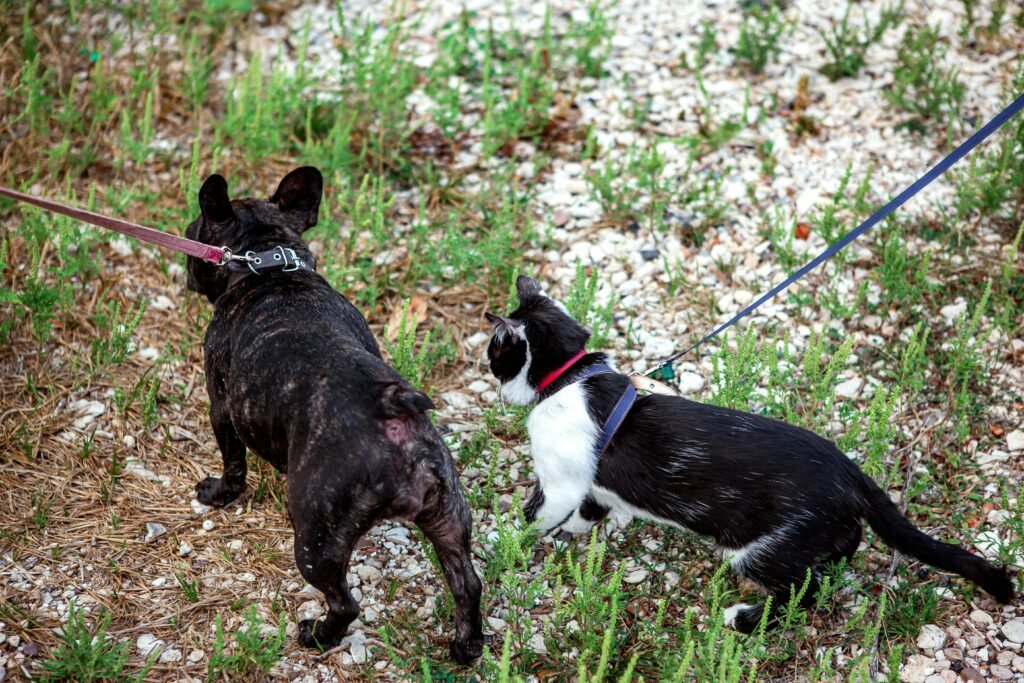
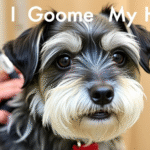
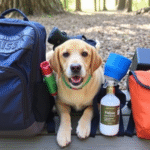
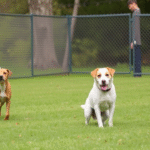


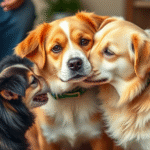
Leave a Reply